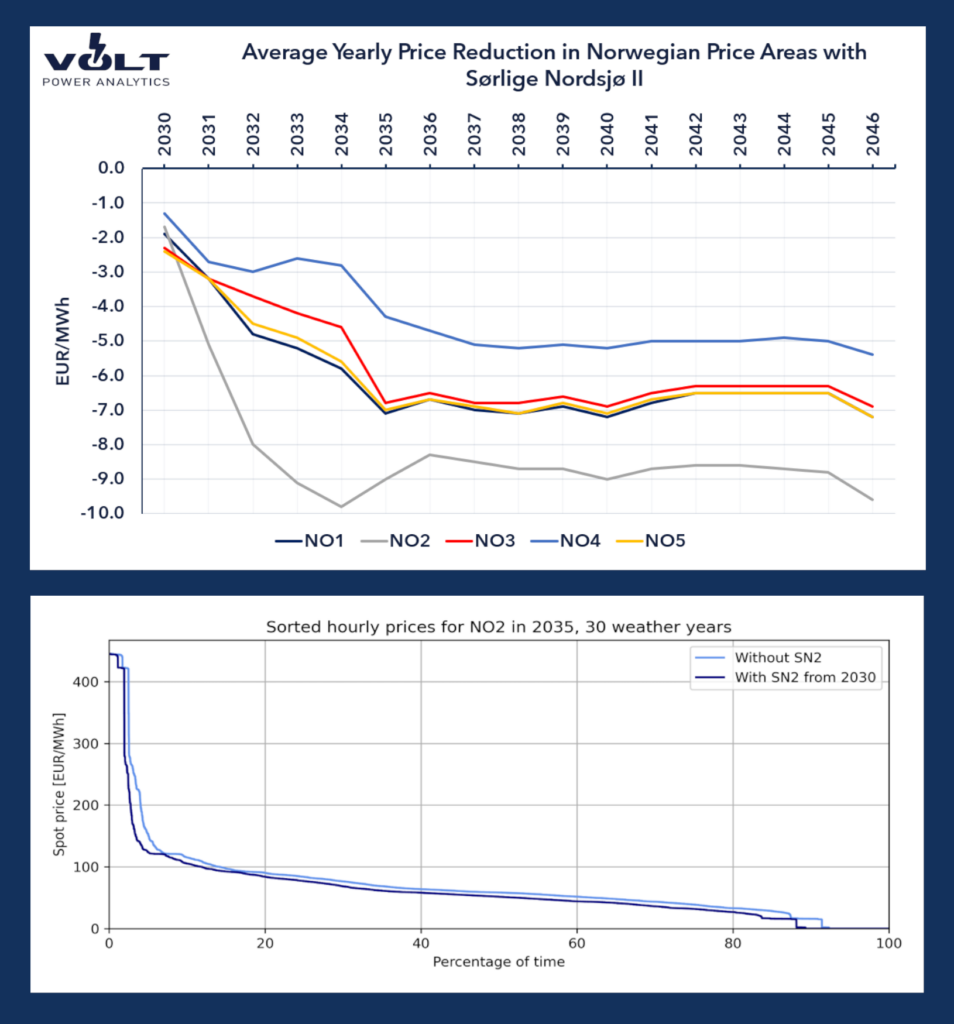In an analysis carried out together with BCG, we have investigated the price effect of offshore wind from 2030 onward. The bidding for Sørlige Nordsjø II started March 18th, 2024, with two consortiums participating in the auction. March 20th, 2024, the Norwegian government announced that Belgian Ventyr outcompeted Equinor and won the right to build out the 1.4 GW of offshore wind capacity with the winning bid of 99 EUR/MWh (strike price).

What will this mean for power prices in NO1 and Norway?
When looking towards the 2030’s in NO2 where Sorlige Nordsjo II will operate, the power balance substantially tightens from the oversupply of 15 TWh we see today. We see a more balanced situation, with roughly +5 TWh on the increased electrification and development of new industry. With Sorlige Norsjo II, 7 TWh per year on average would bring a solid power surplus back to NO2 with a significant price impact. This assumes that the expected industrial developments for NO2 stay unchanged. Based on our price simulations, we see a decrease in the yearly average price in NO2 of up to 9.6 EUR/MWh alongside a higher occurrence of zero-price hours.
For all Norwegian price areas, we see a fall in average yearly prices from 2031 and onwards in the range of roughly 3 to 5 EUR/MWh in NO4 to 7 EUR/MWh in NO1 and NO5 when including Sorlige Nordsjo II in the Norwegian power balance. As a side effect of such large renewable volumes entering NO2, we could also see increased price differences between NO2 and its neighboring Norwegian price areas, NO1 and NO5, until the grid is strengthened.
How does this impact the green transition?
We see a number of second-order effects that the additional power generation from Sorlige Nordsjo II could have:
- The effect of lower power prices and higher renewable generation creates opportunities for new industry, reducing the expected price impact from Sorlige Nordsjo II.
- A faster decarbonisation of industrial sectors on a healthier power balance surplus in Norway, which in turn could lead to higher electricity consumption than expected and thus a dampened price impact from Sorlige Nordsjo II.
- Interest from developers in building large-scale hydrogen production. Such large-scale hydrogen projects could partially mitigate the downside risk of extremely low electricity prices.
- A situation where it may become profitable to build electrolysers with low utilization rates despite high capex, allowing developers to profit from the extremely low electricity prices.
- A strengthened business case for hybrid cables for future offshore wind projects, which would alleviate some of the price reduction and lead to increased stability in electricity prices, reduced cannibalization of profits and bottleneck revenues.
